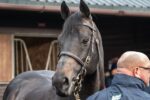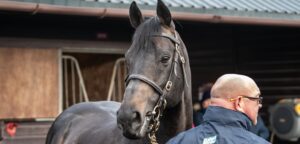We are well and truly in the era of the point-to-point graduate. They frequent the winners’ enclosure at Cheltenham, Aintree and Punchestown, and everywhere in between on a virtually daily basis. It is little wonder that these young National Hunt prospects have become increasingly valuable propositions.
It hasn’t always been this way, though. And the unlikely sequence of events that led us to this stage have as much to do with serendipity as they do vision, as seemingly unrelated occurrences conspired to see point-to-pointers become the answer to a question jumps racing didn’t know it needed to answer.
To illustrate the influence point-to-point graduates exert on the modern-day National Hunt landscape, consider that 37 Grade 1 races open to four-year-olds and upwards were run in Britain in 2023. Of those, 20 (54 per cent) were won by a runner who graduated from the point-to-point field. This list includes major names such as Constitution Hill, Envoi Allen, Honeysuckle, Jonbon and Shishkin
Not all 37 races were staged back in 2003, and of the 30 that were run, not all had been given Grade 1 status. They were still important races nonetheless, and it reveals plenty that of those 30 only two (6.6 per cent) were won by a horse who began their career between the flags.
One of those two just happens to be a certain Best Mate winning the second of his three Cheltenham Gold Cups. However, what started this shift towards point-to-point graduates has little to do with National Hunt celebrities. Instead, its origins can be found in the advent of the internet.
As form, pedigrees, statistics and video replays became more readily available around the turn of the century, Flat horses trained in Britain and Ireland became an increasingly valuable international currency. Whereas the likes of Istabraq, Kribensis and Royal Gait had been given a chance over hurdles, the modern equivalents are viewed as global commodities, and are simply worth too much to jurisdictions like America, Australia, Hong Kong and the Middle East. This has pushed the price of these prospects to a value that jumps owners and trainers aren’t prepared to pay.
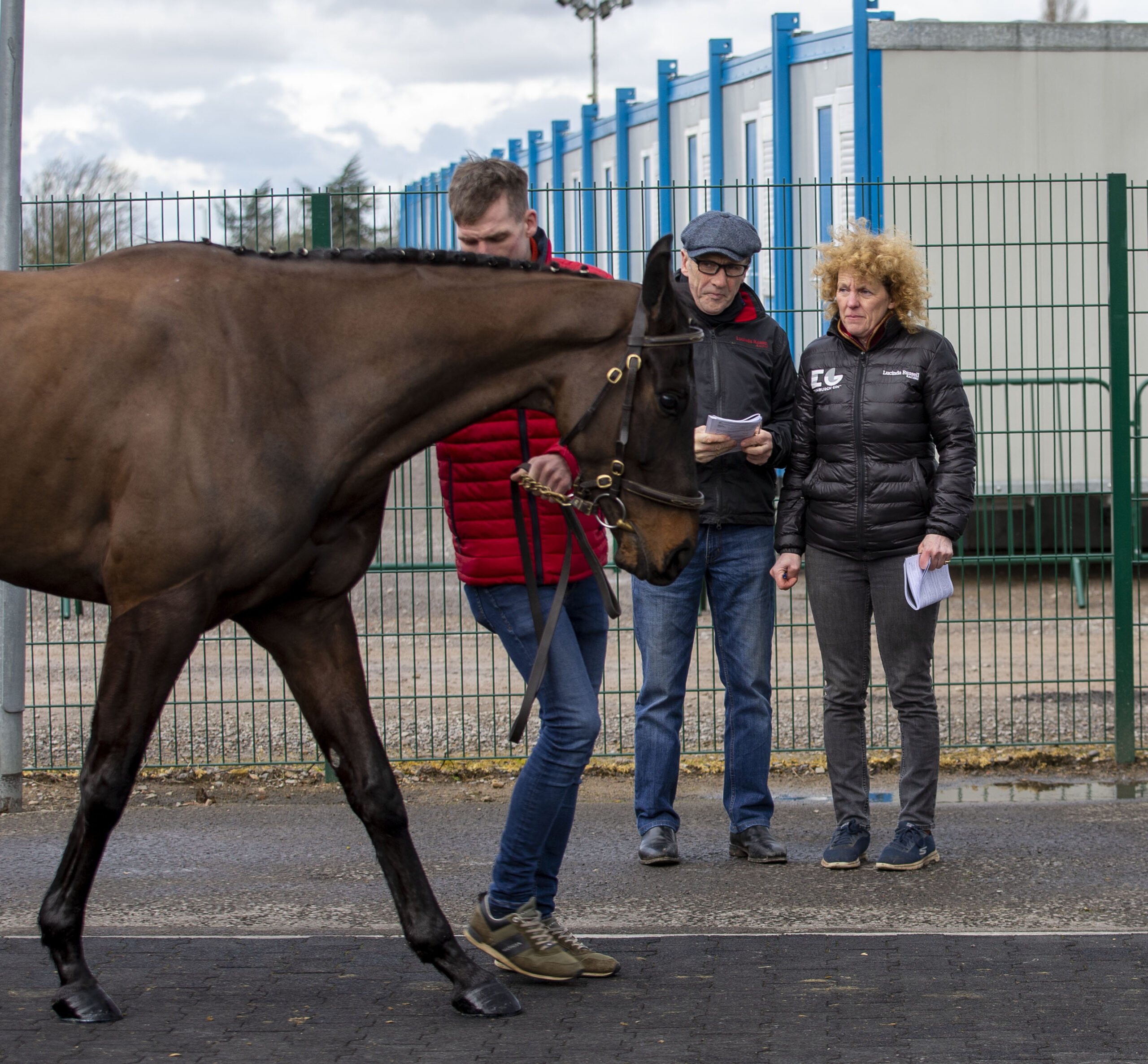
Lucinda Russell and Peter Scudamore have enjoyed success with point-to-point graduates. Photo – Tattersalls
“It used to be that you could buy horses off the Flat for a reasonable amount, teach them to jump and off you went,” says Lucinda Russell, who has won two Grand Nationals with the point-to-point graduates Corach Rambler and One For Arthur. “But now, the stayers that used to cost a reasonable amount, because of international trade and all-weather racing, they’ve become increasingly expensive. I feel the value in the middle market Flat horses really isn’t there anymore.”
Of the 37 open-age Grade 1 winners in Britain in 2023, only one (2.7 per cent) started their career on the Flat. That was the 11-year-old Not So Sleepy, who landed the rearranged Fighting Fifth Hurdle at Sandown as the 9-1 outsider of four. In contrast, those 30 races in 2003 saw six horses (20 per cent) who began their careers on the Flat triumph.
This shift was recognised by the BHA, who, in its 2015 jump racing review, noted that Irish point-to-points had overtaken Flat racing as the most popular source of previously raced National Hunt recruits, writing: “The source of horses into jump racing has shifted significantly, with far fewer horses having their first run on the Flat compared to three to five years ago. The downturn in the number of Flat horses going jumping has created a reliance on Irish point-to-point.”
At around the same time the internet was opening Flat horses up to the world, the format of the point-to-point season was being irrevocably altered as the outbreak of Foot And Mouth disease in 2001 prompted the cancellation of the traditional spring programme. The modern day autumn campaign was initially introduced in response to that disruption, but the changes proved so popular they were adopted on a permanent basis. Prior to these changes, point-to-pointing had, for the vast majority, been little more than a pastime.
Nobody could’ve envisaged the way point-to-pointing was going to go
“When I started riding there were a lot of horses in the system and a lot of small handlers, but point-to-pointing was very much a hobby,” says Jamie Codd, who rode 972 winners between the flags and is now a key member of the Tattersalls Ireland bloodstock team. “Some people had that selling aspect, the likes of the Costellos in Clare, Wilson Dennison in the north, Padge Berry maybe, but nobody could’ve envisaged the way it was going to go.”
The rising cost of Flat horses created a shortfall of National Hunt recruits, but the recalibrated point-to-point season alone wasn’t enough to join the dots between supply and demand. But that is precisely what happened in 2009 when Brightwells began hosting select sales at Cheltenham. The boutique calendar has grown almost exponentially since, with Goffs and Tattersalls, who bought Brightwells in 2015, each hosting their own busy calendars of auctions that bring a year-round supply of point-to-pointers to market.
The emergence of a viable cycle between the store sales, the point-to-point programme and the boutique form horse market suddenly meant a business could be framed around trading and producing young jumps horses. The introduction of boutique sales not only made the process of buying point-to-point graduates more sustainable, but more transparent too.
“There would’ve been a lot more private trade before Brightwells introduced their sales,” says Codd. “Best Mate would’ve been one of those sold privately when nobody knew the real value of horses coming through the point-to-point field. There were always whispers but nobody actually knew.”
This layer of transparency, with buyers able to inspect stock in the flesh and look the vendor in the eye, is also a part of what has ensured the growth of the business. “I came from the show jumping and eventing circuit where we had horse dealers,” says Russell. “Those people had a bad name because they were just trying to sell whatever they had, but I think in order to keep growing, the point-to-point boys have had to keep their reputation and keep being honest and selling the good ones.”
Another pivotal contribution was made by Richard Pugh who launched p2p.ie, which helped bring Irish point-to-point form, data and content to a wider audience. Pugh was also instrumental in seeing point-to-point form become a permanent fixture in leading racing publications, sales catalogues and race cards across Britain and Ireland, a move that helped weave graduates of the sector into the fabric of racing in a way they hadn’t been previously.
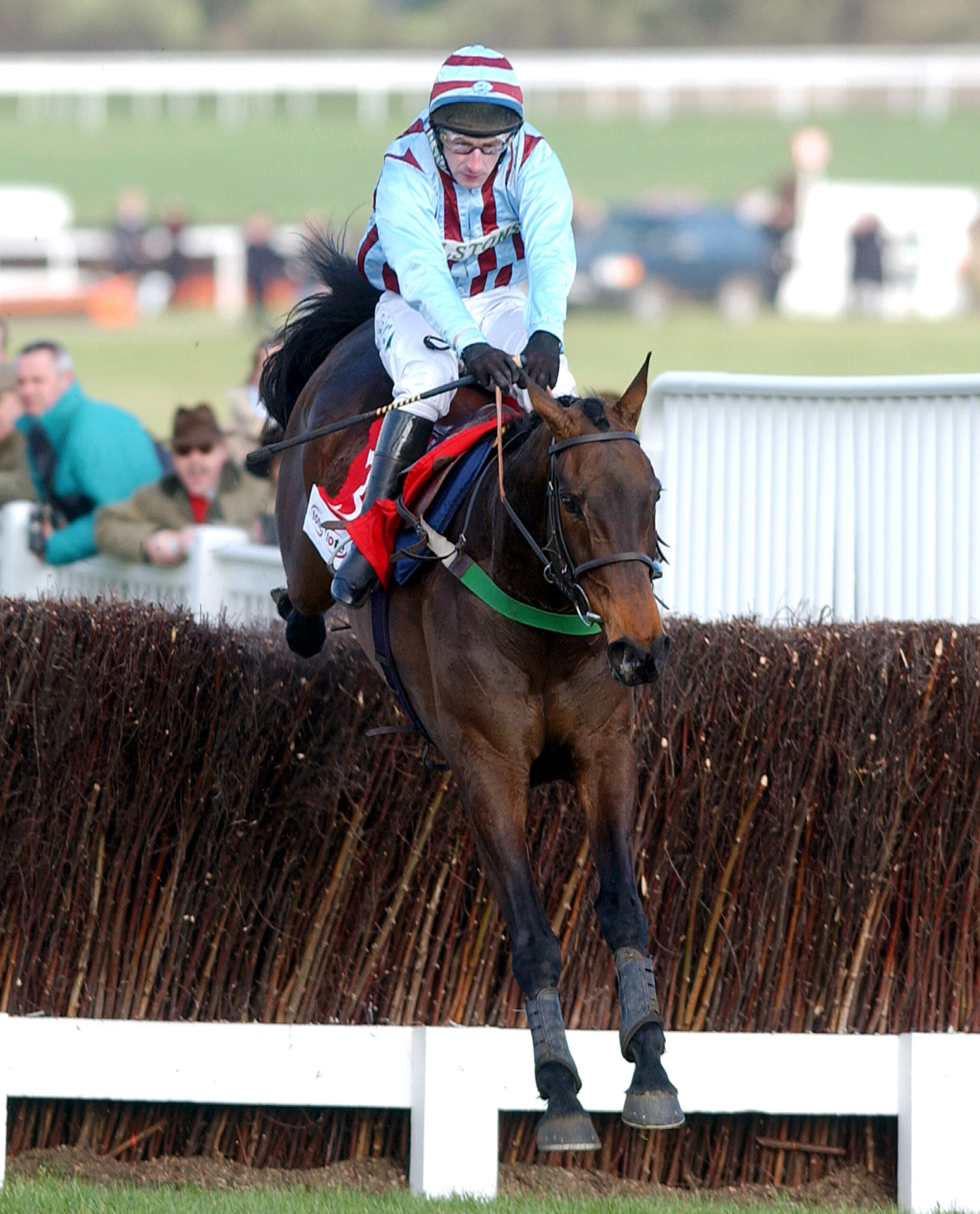
Best Mate: an early flagbearer for the point-to-point scene. Photo – Bill Selwyn
But if these building blocks falling into place sounds like a master plan devised in the point-to-point boardroom, the reality is things developed much more organically.
“I don’t think there was any great plan or a business model, it just happened and has grown from there,” says Codd. “When the Wexford lads came along, they really started it. Ever since they started it more and more people have jumped in, the likes of Aidan Fitzgerald, Sam Curling, the Crawfords, Warren Ewing. There’s so many that have come into the game and gone at it.”
The involvement of some key players from the Wexford scene set the tone for what was to follow, with Codd’s sentiments shared by leading handler Aidan Fitzgerald of Cobajay Stables.
“When a couple of guys in Wexford started buying and selling that brought it all forward,” he says. “The likes of Colin Bowe, Donnchadh Doyle and Denis Murphy.”
Fitzgerald’s own route into the point-to-point business is a fairly familiar tale, with the more established names having started out in other areas of the thoroughbred business, or training pointers alongside other agricultural interests.
“I started off breaking and pre-training before we got a couple of point-to-pointers so I got into it casually enough,” he says. “There was a young lad working for me at the time called Richie Deegan and he got his licence and wanted to be a jockey, so we started off with a couple of maidens for him. We got the bug that way and that’s how we started buying and selling a few. It started off slowly enough but now it’s a massive thing and we buy a lot of stores every year, and try to find a good one if we can.”
When asked if he always planned on scaling his point-to-point business to the size it is now, Fitzgerald’s response perhaps typifies the approach of so many of his contemporaries. “I never really thought about it that way,” he says bluntly. “You just go week by week, year by year.”
Point-to-points becoming an important proving ground for young jumpers may have come about more by luck than design, but there is no doubting the skill of those who have seized the opportunity.
“Colin Bowe, Denis Murphy and Donnchadh Doyle are the lads I’d look up to and they’re savage horsemen,” says Fitzgerald. “They’re proper horsemen and everything they do is done to perfection; their yard, their gallops, their facilities. And I know some people have this notion that everyone gallops their horses all the time. But if you gallop and gallop and gallop a young horse, you’ll have no horse.”

Sam Curling and Colin Bowe. Photo – Tattersalls
Russell echoes those views, saying: “The point-to-point producers do an absolutely fantastic job. When you see the number of horses they buy at the store sales, and they’re producing them time after time, it’s phenomenal. If you go to the point-to-point trainers, they’ve got better facilities than a lot of the trainers operating under rules have. They’ve invested heavily and they’ve got fantastic gallops and facilities.”
Investment is a key part of the equation for buyers and sellers. Increasingly impressive results on the track have seen a veritable explosion in the price purchasers are prepared to pay for a point-to-point graduate. Sizeable six-figure sums are now commonplace, and in late 2020 consecutive point-to-point sales held at Yorton Farm under the Goffs UK banner saw two lots fetch £570,000 apiece.
The record was set by Jonbon, who was sold to JP McManus after winning a Dromahane maiden for Ellmarie Holden. One month later that same price was given by Tom Malone and Gordon Elliott, acting on behalf of Cheveley Park Stud, for Donnchadh Doyle’s Borris House winner Classic Getaway.
Further illustrating the growth is the annual results of the Cheltenham sales. In 2014 Brightwells held six sales at Cheltenham that generated turnover of close to £12.3 million. In 2023, Tattersalls held seven auctions at Prestbury Park that generated receipts totalling a record £20,965,500. Make no mistake, this is big business indeed.
“I remember a big deal being made when a horse called Local Whisper made 62,000gns in Doncaster in the late 80s,” says Goffs group chief executive Henry Beeby. “People thought that was extraordinary money for a point-to-pointer to make. Point-to-pointers used to make ten to 40 grand and that was considered good money in those days. That would be seen as little money now. It’s grown out of all recognition.”
And, moreover, success is breeding success. A booming point-to-point market has allowed handlers to reinvest increasingly significant sums on the raw materials at the store sales, which in turn is allowing them to apply their expertise to a better calibre of stock.
As an example of the increased investment – and risk – the Doyle family behind Monbeg Stables spent a not inconsiderable €267,500 on 21 lots at an average price of €12,738 at the 2013 renewal of Goffs’ premier store auction. Last year they topped the Arkle Sale buyers’ chart by aggregate spend with 31 recruits secured for an outlay of €1,626,000 and at an average of €52,452.
They’ve upped their investment and have been bold and strong
“In the last five to seven years the point-to-point buyers have gone from being important but relatively small to being absolutely vital to the store market,” says Beeby. “They’re key players and major investors and they’re a significant contributor to the health, or otherwise, of the National Hunt market.”
Beeby continues: “They’ve upped their investment and have been bold and strong and seen an opening. Talk about putting your money where your mouth is. All pinhooking is a risk, but you have to say this is right at one end of the scale because you have everything that can go wrong when you have to send a horse over three miles and fences.”
However, the proven nature of the system means that agents, owners and trainers are increasingly prepared to stand back at the store sales and allow the point-to-point trainers to sort the wheat from the chaff.
“If you look at the price they’re paying for stores, I’m now competing with the point-to-point handlers at those sales,” says Russell. “But I’m happy for them to buy the horse, filter the ones that are no good and then pay a bit extra, because if I buy ten stores, five will be good and five won’t. With any store sale there’s going to be horses who look beautiful that don’t make it, so I’m happy to let the point-to-point handlers take that risk.”
“When we started we were buying them for €5,000 and €6,000,” adds Fitzgerald. “The biggest thing was the better horses going point-to-pointing. That’s really when better horses started leaving point-to-points and were going on and winning races straightaway for owners in Britain and Ireland. The first three home in a four-year-old maiden nowadays could all be Graded horses. They’re very strong races.”
Although the Irish dominate the market at present, the British point-to-point scene has the potential to be a growth area within the sector. British point-to-points have already produced a handful of genuine stars, with Energumene winning a Larkhill maiden for Tom and Sophie Lacey before being sold on to Willie Mullins, while Russell’s dual Grade 1 winner Ahoy Senor registered his first success at Kimble for Phil and Melanie Rowley.
A new wave of handlers are emerging in Britain, including the likes of Francesca and Charlie Poste, Tom Ellis and Gina Andrews, Chris Barber and Bradley Gibbs. This quartet are not only prepared to invest on a commercial basis, but have enjoyed success with their graduates, both in the ring and on the track. They are being aided in their efforts by a series of races sponsored by Tattersalls and Goffs and which are confined to four- and five-year-olds, while the Jockey Club backs a series devoted to maiden fillies and mares.
Having already enjoyed success with the likes of Ahoy Senor, Russell is in no doubt that the talent is there to produce horses to as high a standard as the Irish. However, she says the challenge the British face is in getting their hands on the right raw materials at source.
“This is where the British point-to-point producers are going to have to catch up, because they can’t moan that they’re not getting the prices because the Irish are buying the best horses in the first place,” she says. “You can buy really good British point-to-pointers, though. And if you get good producers buying good store horses, which isn’t necessarily about price tag, then British point-to-pointing will pick up.”
Few would have seen the point-to-point boom coming. But, having hit on a seemingly self-sustaining strategy, it looks like it is here to stay.
“If they start selling middle-of-the-road horses then the market will slow down, but so long as they keep within the rules of being a good dealer I can’t see why it would change,” says Russell. “And if they do that, I don’t see how it will self implode. Horses are getting more expensive, training fees are going up, everything is getting more expensive. So of course point-to-pointers are getting more expensive. But, at the end of the day, you still have to buy what you like.”
In the immediate future there is the Cheltenham Festival to worry about, and at the time of writing, the ante post markets for the 19 open company contests feature ten favourites who graduated from the point-to-point field.
“I can’t see much changing,” says Codd. “I think the point-to-points will stay very strong and I think the market for those horses will stay strong because there’s so many good graduates coming through. The system works. There’s winners in Britain and Ireland every day of the week.”
In the longer term, there are already stables stocked with blue-chip National Hunt prospects and a fresh generation of handlers beginning to emerge, all of which points to the future of the point-to-point graduate looking as bright as it ever has.
“The point-to-point fraternity deserve the success they’ve enjoyed because they’ve made their own success,” says Beeby. “They’re buying unbroken three-year-olds and making them into proper horses. I’ve got nothing but praise for them. They’re mighty men and women because they’re knowledgeable, brave and proactive. They’ve created a very strong part of the market and I hope and expect it will continue to thrive.”
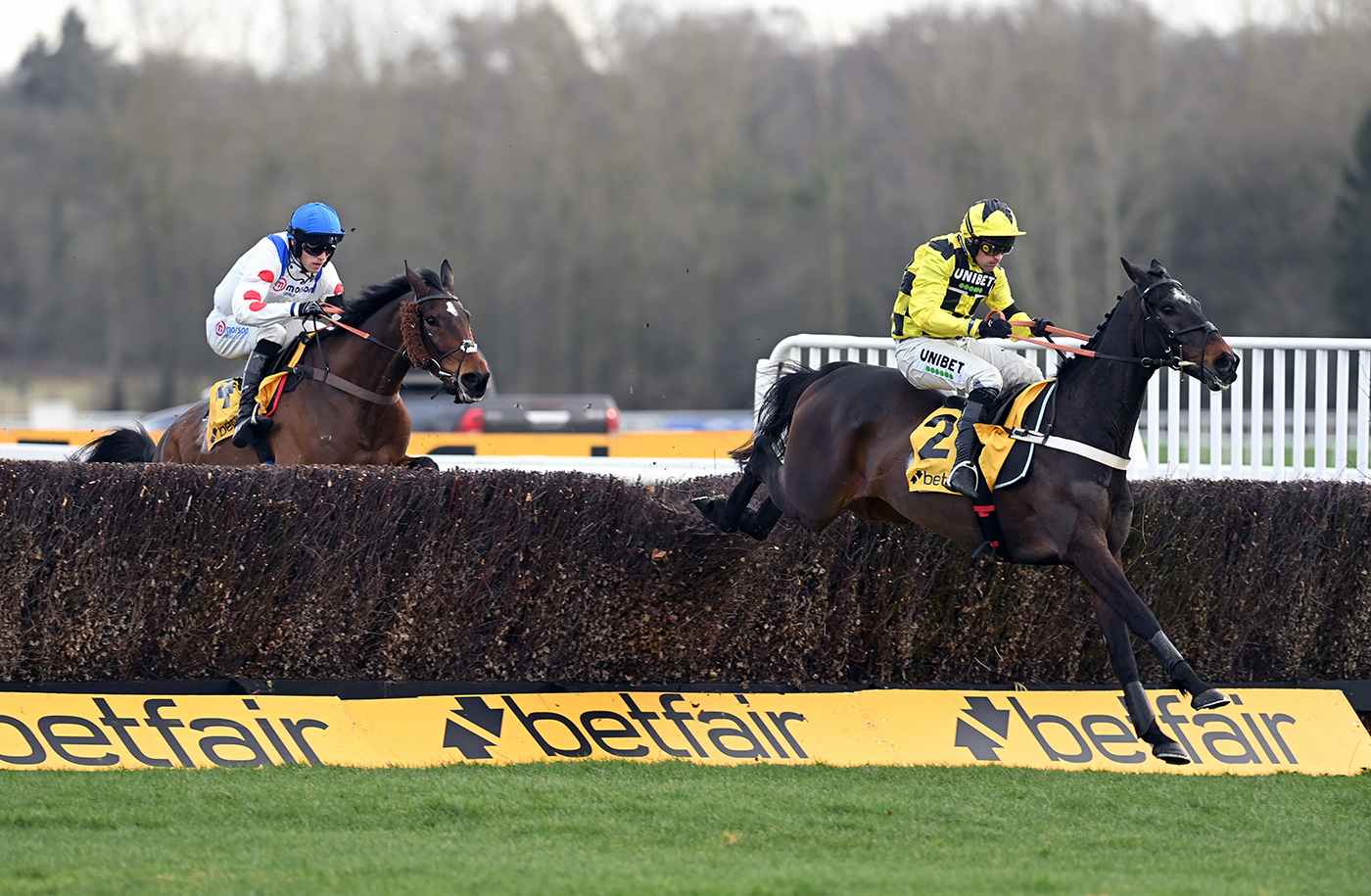
Shishkin flies the last in the Betfair Denman Chase at Newbury. Photo – Bill Selwyn


